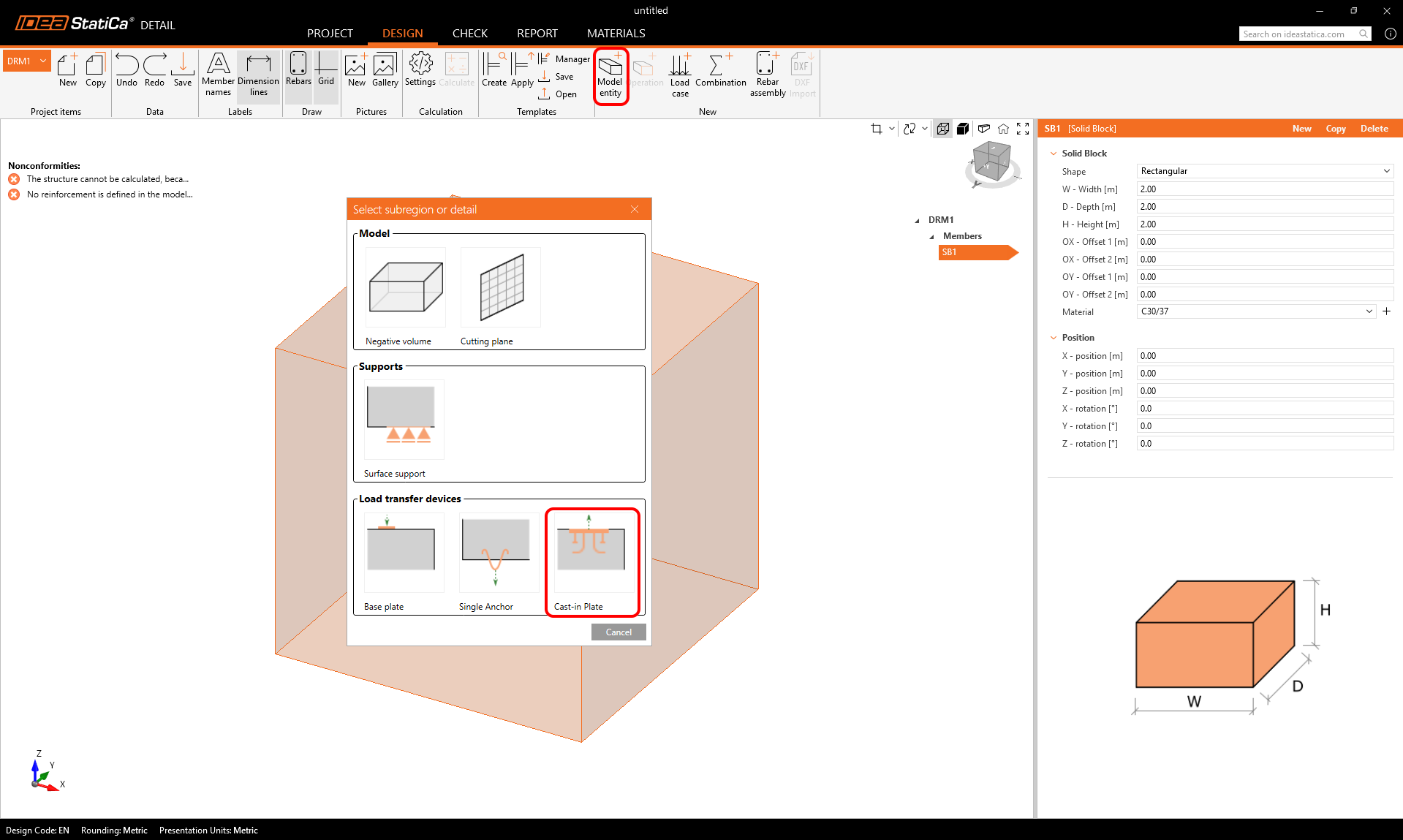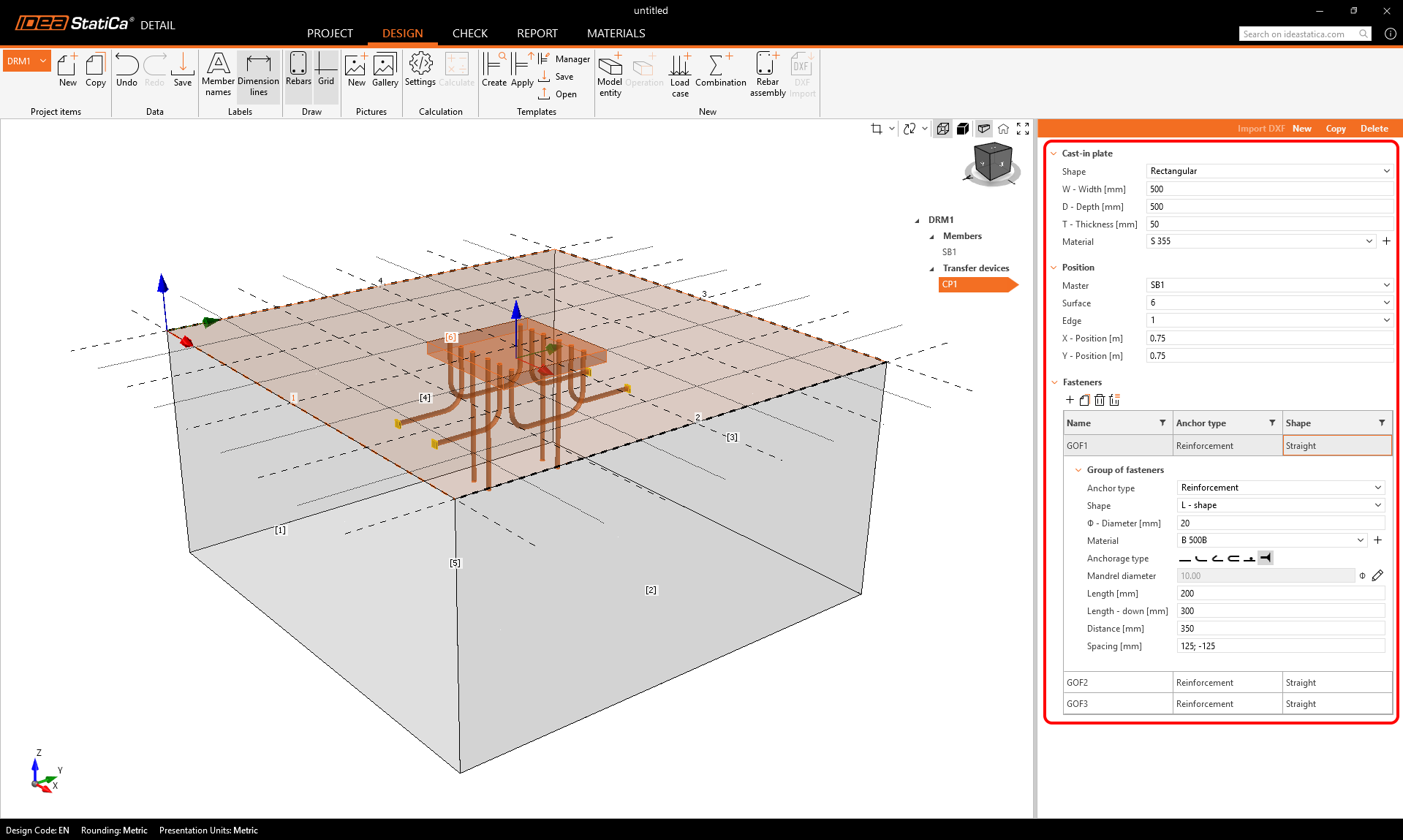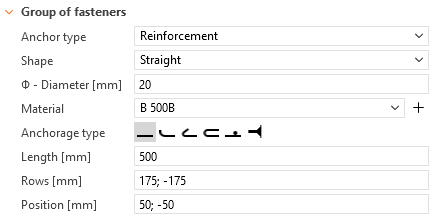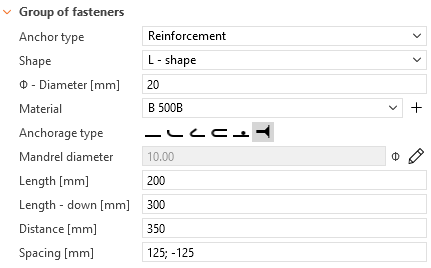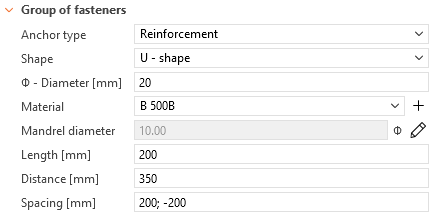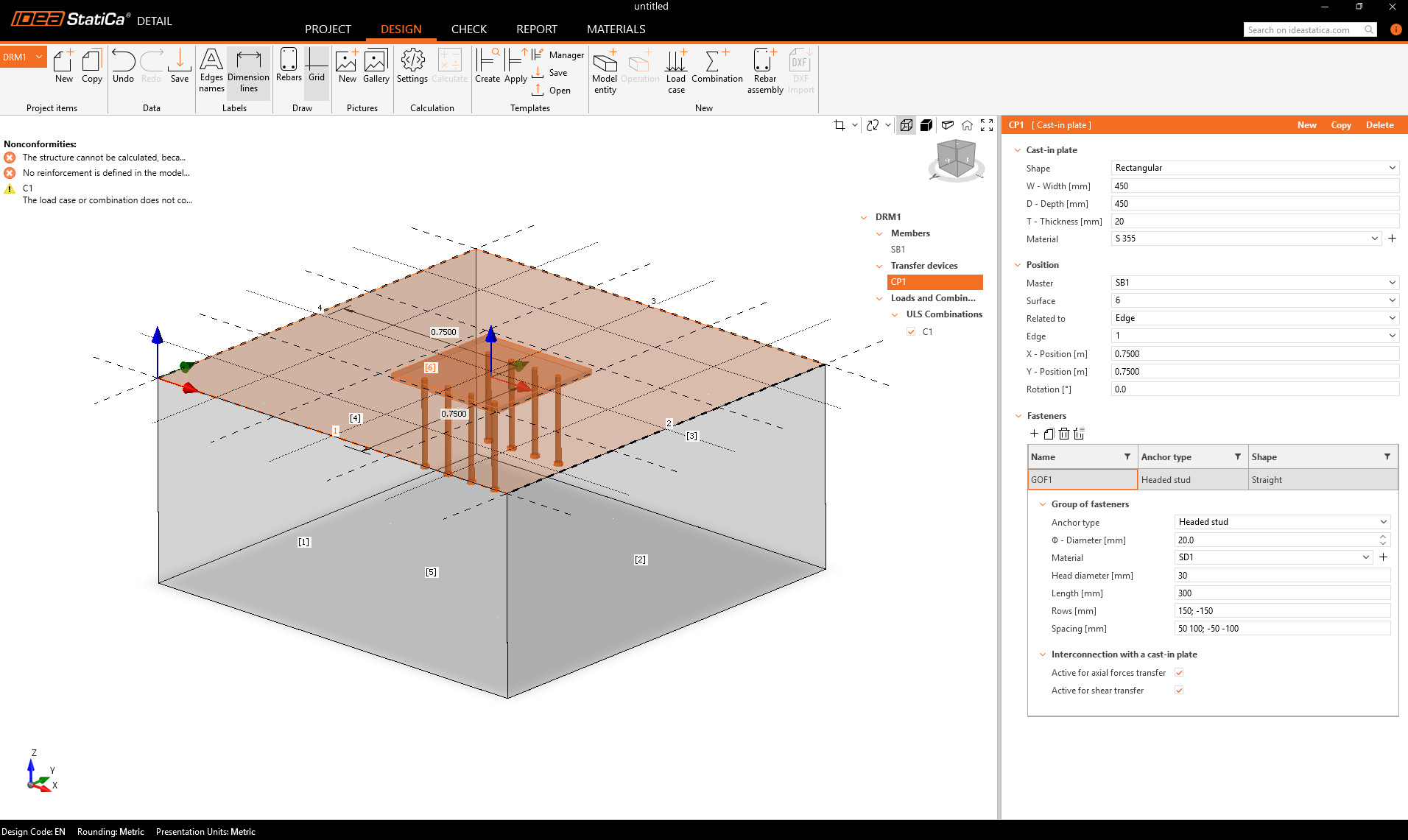Cast-in plates in Detail
In Detail, you can find cast-in plates with fasteners/reinforcement of several types commonly used in construction for securing beams, columns, or façade elements. Cast-in plates ensure strong and reliable load transfer between steel and concrete structures.
Cast-in plates in Detail
Cast-in plates are available as a Load Transfer Device in the model entity selection. The plate’s geometry and position can be defined in a single property grid, while an additional table allows users to add and combine multiple groups of fasteners. Fasteners can be defined directly for each specific plate. Users are able to add an unlimited number of fasteners and even combine multiple types within a single plate.
Reinforcement types
The Cast-in plate allows for welded reinforcement in three shapes: Straight, L-shape, and U-shape.
- Straight: Anchors can be arranged in rows and positions following a predefined key (similar to bolt placement in Connections). Users can define material, length, and diameter, as well as specify an anchorage type.
- L-shape: Defined as two rows of anchors with adjustable spacing and row distance, with the option to specify anchorage type.
- U-shape: A continuous series of reinforcements forming a U-shape, connected on both sides.
Released in IDEA StatiCa version 25.0.
Headed stud
The headed stud transfers load to the concrete exclusively through compression contact. The head is modeled as a plate-shell element directly attached to the anchor shank with fully customizable dimensions. The plate itself is modeled linearly, without plasticity, and is not subjected to resistance checks. Since the shank has zero bond strength, the entire load is transferred to the concrete through the head.
This element is assigned corresponding material grades according to ISO 13918 available in the MPRL.
Model Behavior
Anchors are treated as elements resisting both shear and tension, as they are welded to the plate. Their evaluation follows the same principles as standard anchors, with similar limitations (e.g., shear in the anchor cannot yet be assessed in the application). For more information, see the Theoretical Background.
A control option allows the defining of which group of fasteners transfers specific load types, for example, assigning shear to studs while reinforcement carries tension and compression.
Released in IDEA StatiCa version 25.1.



